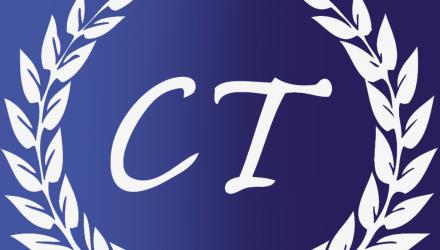The worlds of theory and practice cannot survive in isolation. CSP professional adviser Gwyn Owen spotlights one physiotherapist who has a foot in both camps

Clinical and research roles are not competing forms
I was struck, while listening to a debate at the CSP’s Annual Representative Conference earlier this month, by the different perceptions of ‘research’.
In effect, motion 6 called on the CSP to lobby the Health and Care Professions’ council to change its continuing professional development (CPD) standards so that evidence of research activity would become mandatory for renewing registration, whatever their clinical setting.
This was a contentious motion, rejected by conference, but designed to stimulate discussion about the nature of ‘research activity’. But it made me reflect on what we mean by ‘research’.
Research is a systematic process of collecting, analysing and synthesising information to generate new knowledge and understanding about a specific issue.
It is underpinned by a critical awareness of what is already known.
The outcomes are usually disseminated by written reports, platform presentations and seminars – all designed to promote the integration of research into practice and to generate further research.
Physiotherapy’s problem-solving practice is also a systematic process of collecting, analysing and synthesising information about a specific issue.
The process is also underpinned by knowledge – drawn from previous experiences and a critical appraisal of the current evidence-base.
But rather than generating research findings and publications, problem-solving produces an understanding of what the problem is (a diagnosis), and a plan for how the problem could be resolved (management plan).
Implementing the plan produces problem-resolution and evidence of how effective (or otherwise) physiotherapy was in that situation.
The relationship between research and problem-solving is significant. It enables physiotherapy to justify its identity as a science-based professional practice, but, more importantly, it reduces the gap between theory and practice.
If research isn’t led by the issues and questions emerging from practice, then how can it become relevant to practice?
Equally if practice isn’t able to apply the new understandings generated by research, how does it develop?
Achieving symbiosis
It is this relationship between theory and practice that led Katie Robinson to pursue a clinical academic career.
For Katie, this means working in two roles.
She spends part of the week as clinical studies development officer for the Primary Care Research Network, the rest of the week working as a clinical researcher in the Health of Older People Research Group at the University of Nottingham – which is where she is undertaking a part-time PhD.
The focus of Katie’s research is chair-based exercise and exercise strategies for frail older people.
The questions she is researching have come directly from her clinical practice.
The research findings should therefore be applicable to physiotherapists and other professional groups involved in designing and delivering exercise programmes for frail older people.
But it’s not just the new knowledge generated by the research that translates into physiotherapy practice.
It is clear from chatting with Katie how knowledge and skills developed in the clinical environment move across to support the development of the research - and vice versa.
Katie’s knowledge and understanding of how services for older people are organised is helping inform the recruitment of subjects into the research process.
She has used the communication, teamworking and critical thinking skills from physiotherapy to develop consensus across six professional groups about the principles underpinning the design and delivery chair based exercise.
At the same time, Katie’s research role is creating opportunities to extend her knowledge, skills and confidence in the research process .
These range from costing services and submitting bids for additional resources to disseminating information about the process through presentations and formal teaching sessions. In the current climate, these knowledge and skills have direct relevance to physiotherapy practice – for service costing and tendering processes and for communicating the added value of physiotherapy to a variety of audiences.
So, rather than being two separate, competing forms of physiotherapy practice, Katie’s clinical and research roles are symbiotic – development in one informing the development of the other.
You will find some information and resources to help you strengthen the links between the clinical and research arenas in the box below.
Katie Robinson’s career development
I graduated from the University of Nottingham in 2007
My early career was spent working in a national college for young adults with complex disabilities where I developed a foundation of physiotherapy skills. I then moved on to working with older people in a community rehabilitation setting
I completed a full-time National Institute for Health Research (NIHR)-funded Masters in research methods in 2011 at the University of Nottingham. This gave me a broad overview of clinical research methods and how these could be applied to developing my practice and the physiotherapy profession.
After completing this study I returned to my clinical role working with older people in the community. I was keen to apply my new skills to clinical practice through undertaking small projects such as focus groups and service evaluation
I then took up a role as a research facilitator in primary care working for the NIHR Primary Care Research Network to develop my research skills and knowledge. This role developed my skills in essential research skills such as recruitment strategies, ethics and governance procedures and data process.
In 2013 I took up a role as a clinical researcher on a project looking at developing chair-based exercise programme for older people.
As well as this role, I am working part-time towards a PhD. This has given me hands-on experience of exploring a clinical problem through a programme of research and has developed my clinical and academic skills.
How to use this article to support your CPD
- Visit the redesigned ‘research’ pages on the CSP’s website
- Here you will find a wealth of information that will help develop your research knowledge and skills.
- So whether you’re looking for some top tips on designing a questionnaire to collect feedback from service users about your practice, or are thinking about a career move into research – there is something in this space for all CSP members ‘doing research’ contains sound advice and signposts to other resources to help you through the research process – from developing a research question and finding and critiquing what is already known about your topic to the actual conduct of research and disseminating your research findings ‘networking and support’ is where you can find people and online resources to support the development of your research knowledge, skills and ideas.
- The Pocket Guide to Research is freely downloadable from this space – packed full of information about designing research, doing critical appraisal, research ethics and much more.
- Why not make contact with the Allied Health Professions’ Research Network lead in your area to find out how you could get involved in the network locally?
- ‘research careers and training’ is where you will find out about how you could make the move into research and the support available to facilitate that process.
- The descriptors in the CSP’s Physiotherapy Framework have been mapped to six other competency/career frameworks including the the Knowledge and Skills Framework and VITAE (researchers’ framework).
- Use the Physiotherapy Framework to see how the behaviours/knowledge/skills you use in your current practice translate across into research practice.
- To view a condensed version of the Physiotherapy Framework, and search for ‘physiotherapy framework’.
Author
Gwyn Owen
Number of subscribers: 1




































